|
INSECTS ON BIRCH: LEAF TIERS AND ROLLERS |
||
|
Leaf tiers and rollers Leaf rolls on birches are made by many insect groups. The shelters can be very similar-looking, so the larvae often need to be checked in order to identify the species. |
||
|
Deporaus betulae (Coleoptera: Attelabidae) Deporaus betulae makes its characteristic cone-shaped shelters by cutting a two-sided asymmetric slit across the leaf blade, and then rolling and glueing the leaf parts together. The pale legless beetle larvae can be found in the center of the tight roll. The species sometimes also uses alder (Alnus spp.) and hazel (Corylus spp.) species, although birches are preferred. |
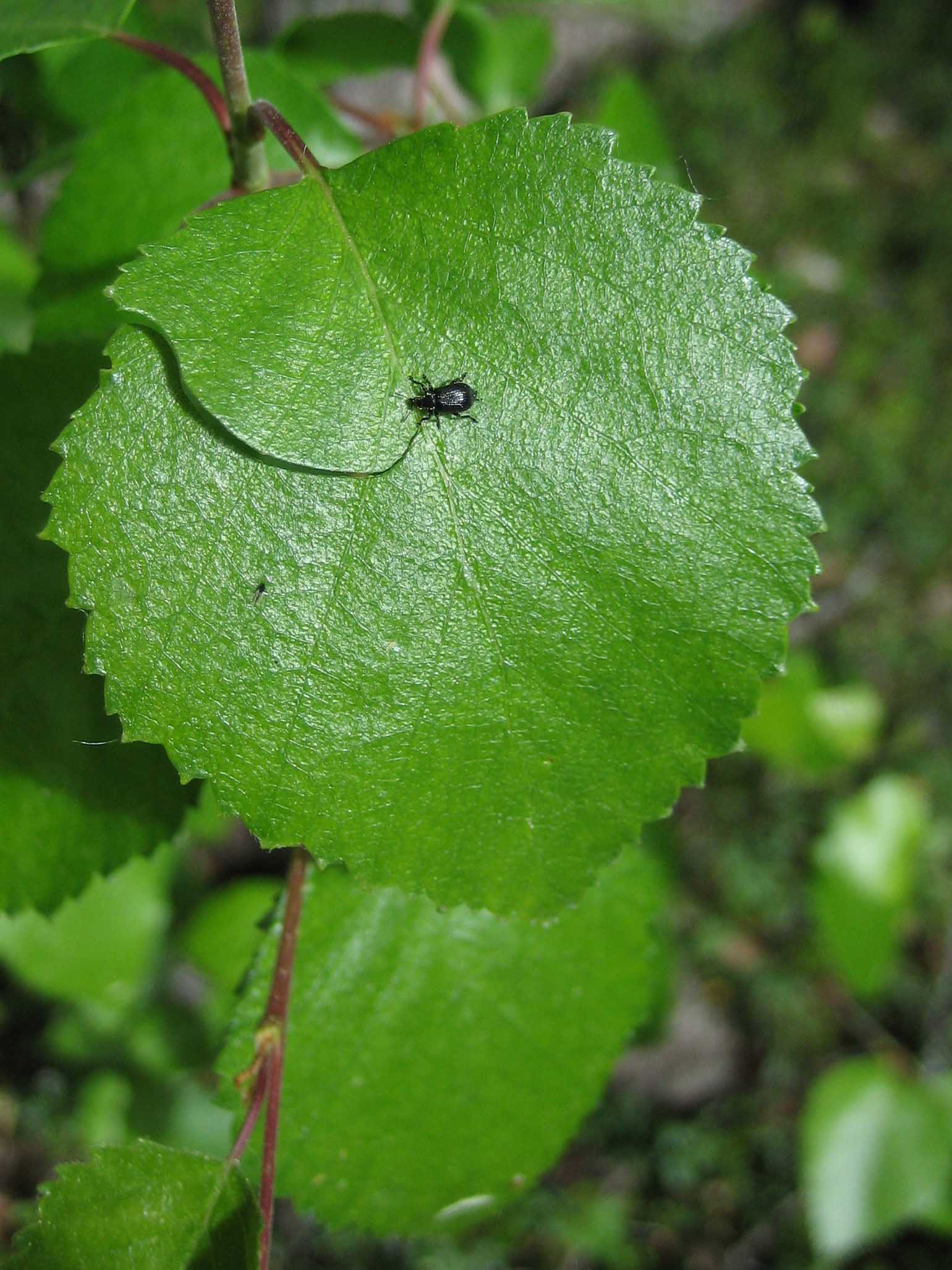 |
 |
|
Deporaus betulae female in the process of cutting a slit in a birch leaf. The cut will continue to the other side of the leaf, but the midrib is left intact. |
Deporaus betulae female making a leaf roll on Betula pubescens. |
|
|
|
||
|
Leaf cones constructed by Deporaus betulae on Betula pubescens. The cones are initially green, but they become dry during the summer. |
||
|
Byctiscus betulae (Coleoptera: Attelabidae) Byctiscus betulae makes larger bundles that involve many leaves on birches, aspen (Populus tremula), and occasionally also willows (Salix spp.). The larvae live inside the bundles, which dry and become brown later during the summer. |
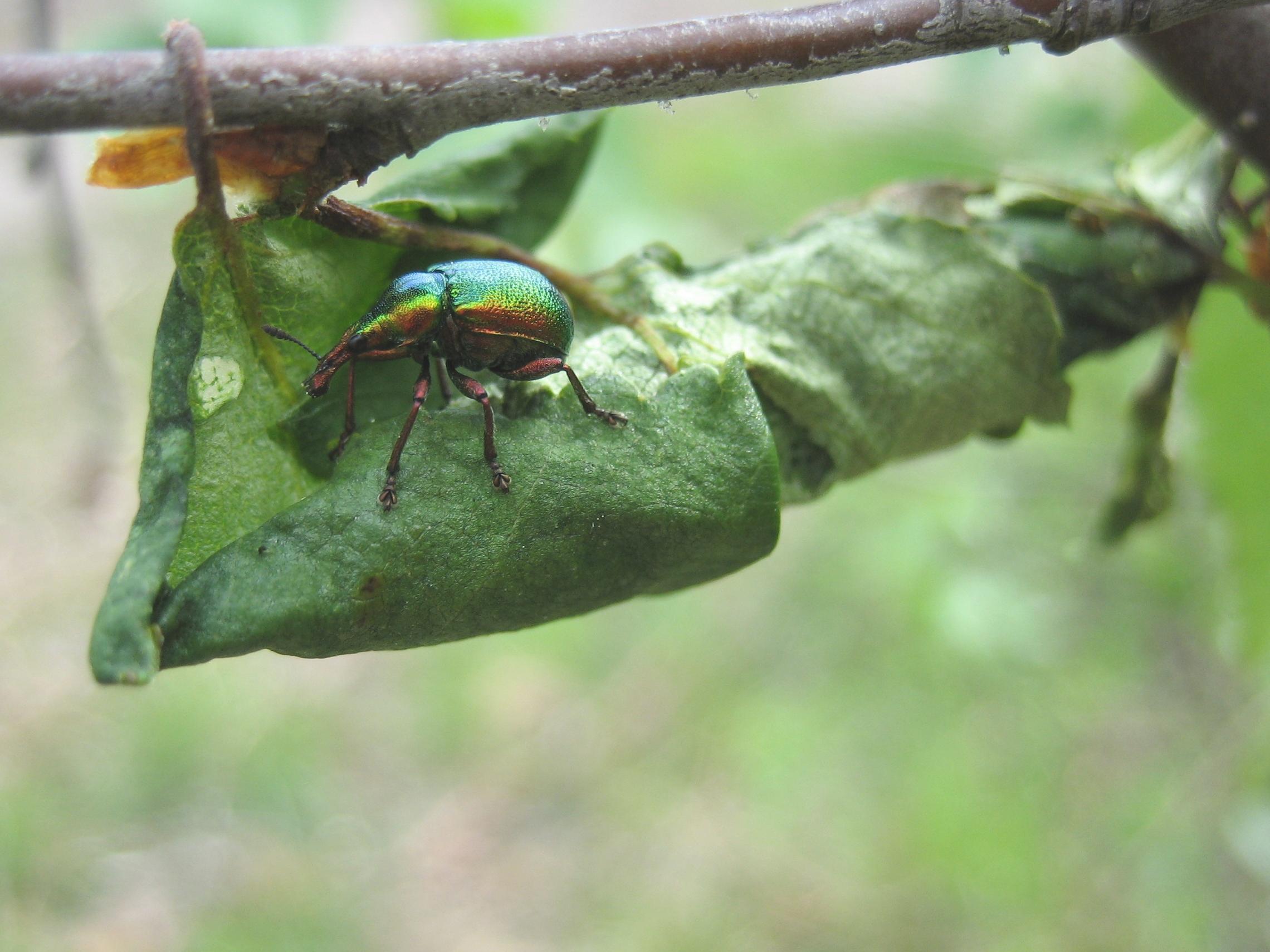 |
|
|
Byctiscus betulae guarding leaf roll on Betula pubescens. |
||
|
|
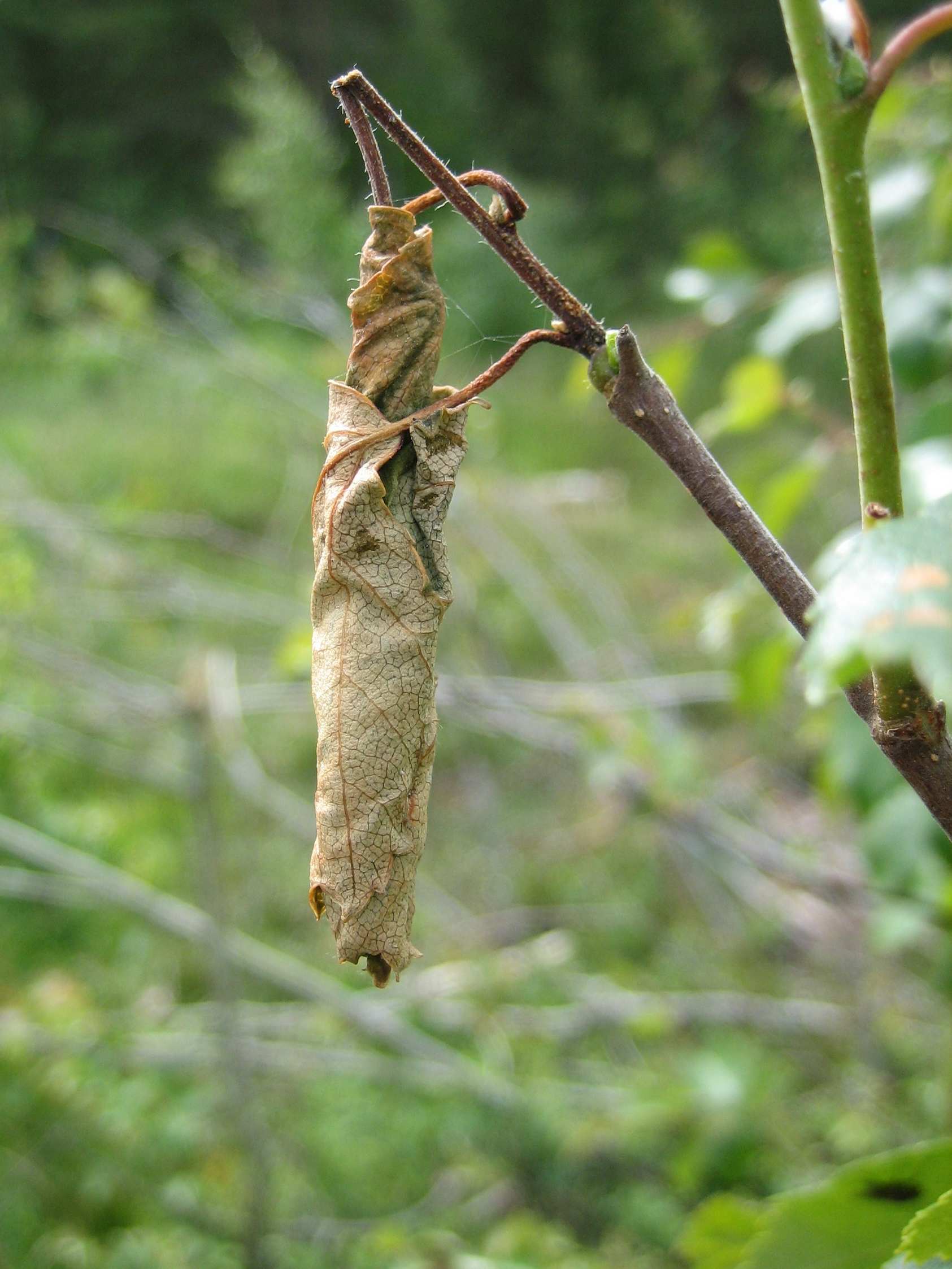 |
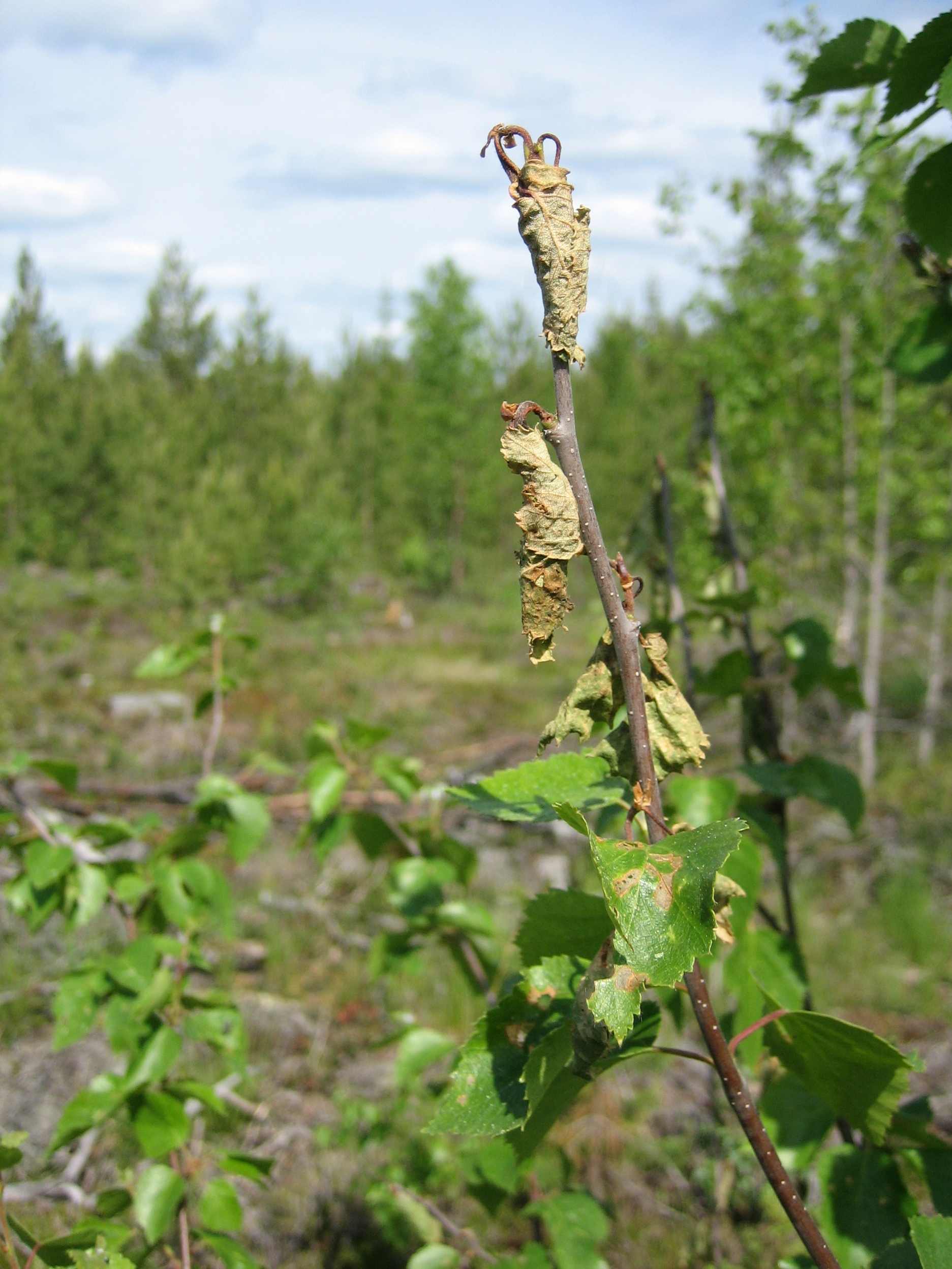 |
|
"Cigar" made by Byctiscus betulae on Betula pubescens. Note the severed shoot and petioles. |
Byctiscus betulae leaf rolls on Betula pubescens. |
|
|
Pamphilius sp. (Hymenoptera: Pamphiliidae) Pamphilius sawfly larvae cut a transverse slit on the leaf blade and then construct a roll by using silk. The round-headed larvae have conspicuous antennae but no abdominal prolegs. |
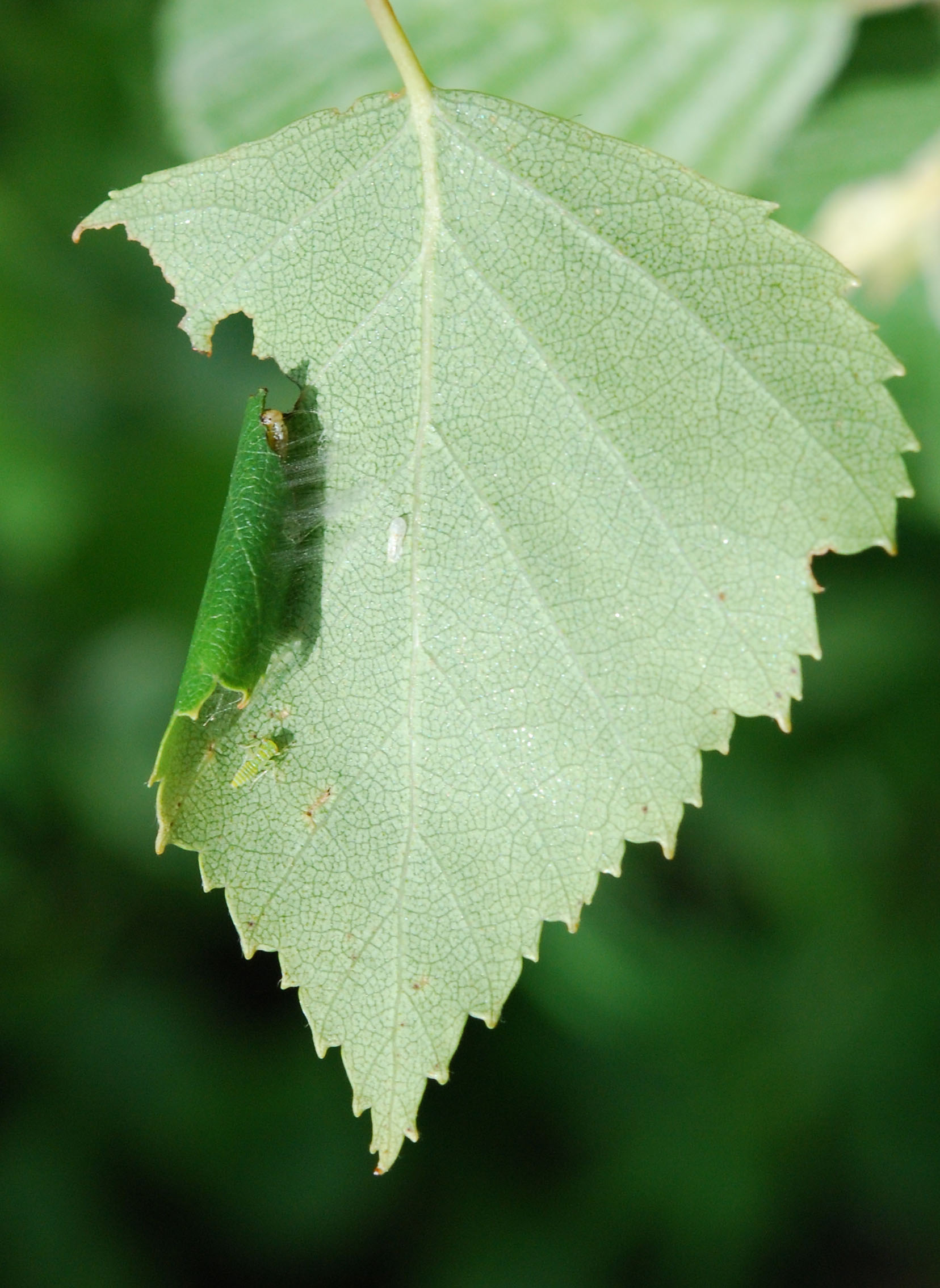 |
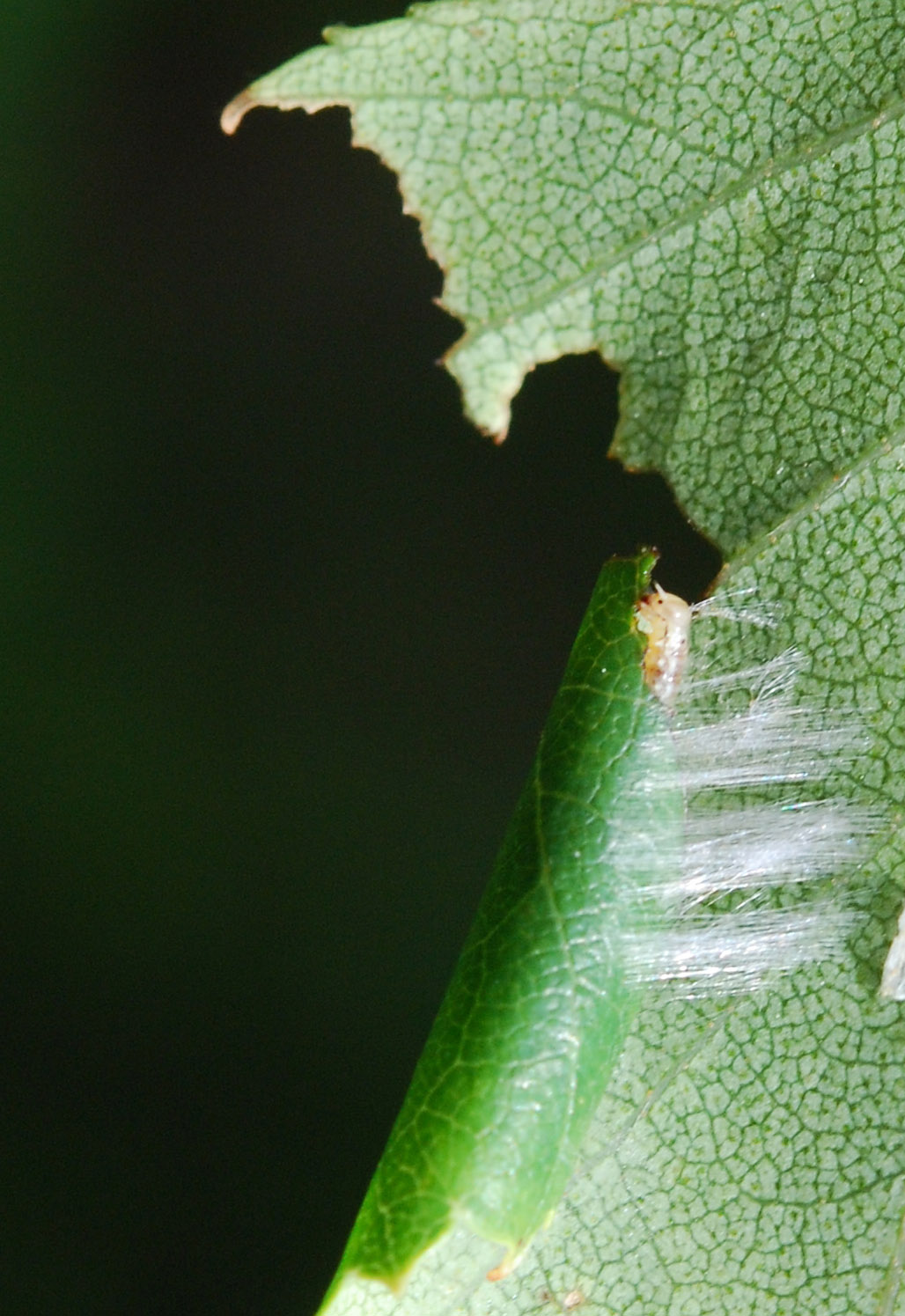 |
|
Pamphilius sp. roll on a leaf of Betula pubescens. The larva is visible in the upper end of the roll. |
Pamphilius sp. larva inside a roll on Betula pubescens. Note the strands of silk that hold the roll in place. |
|
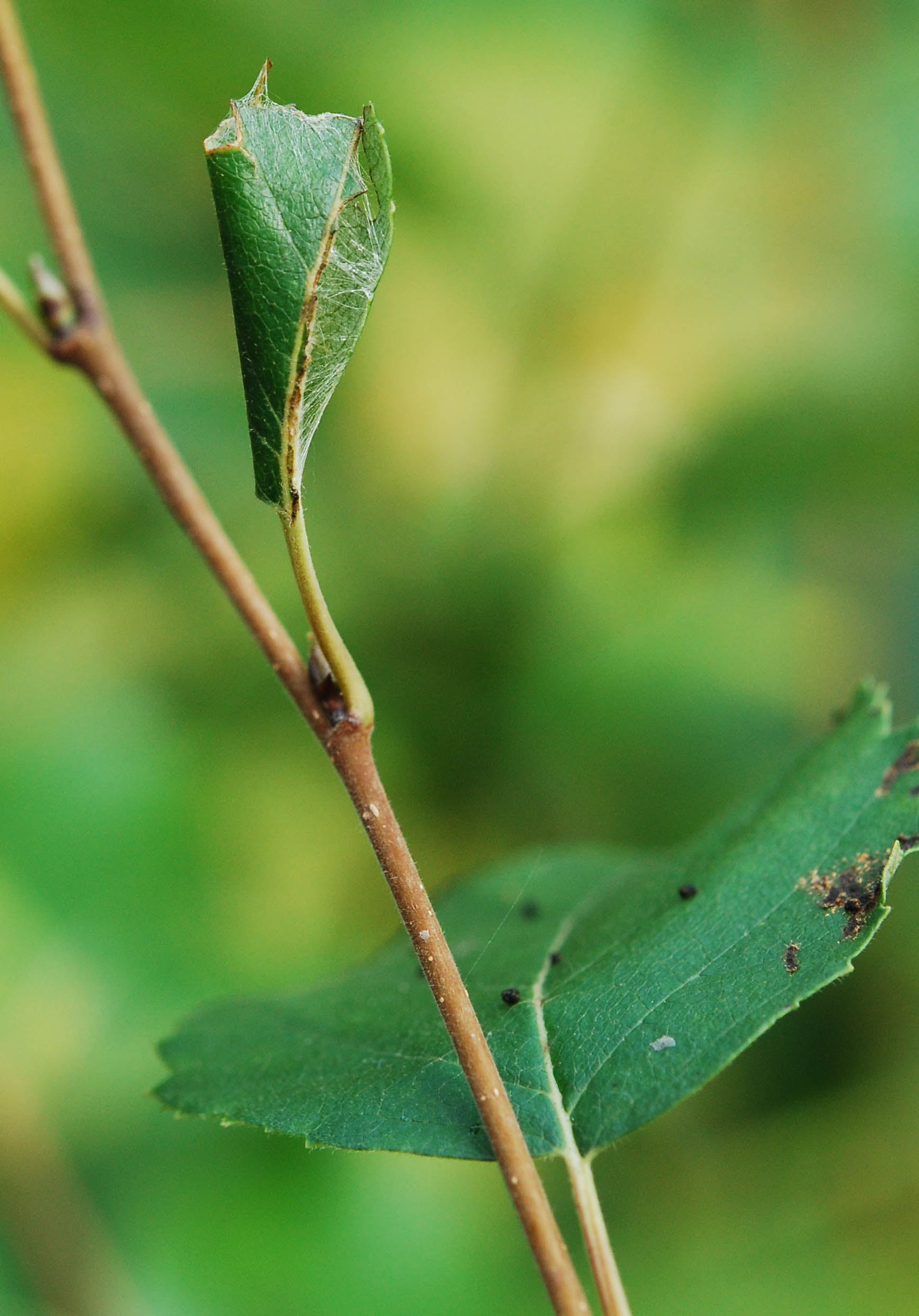 |
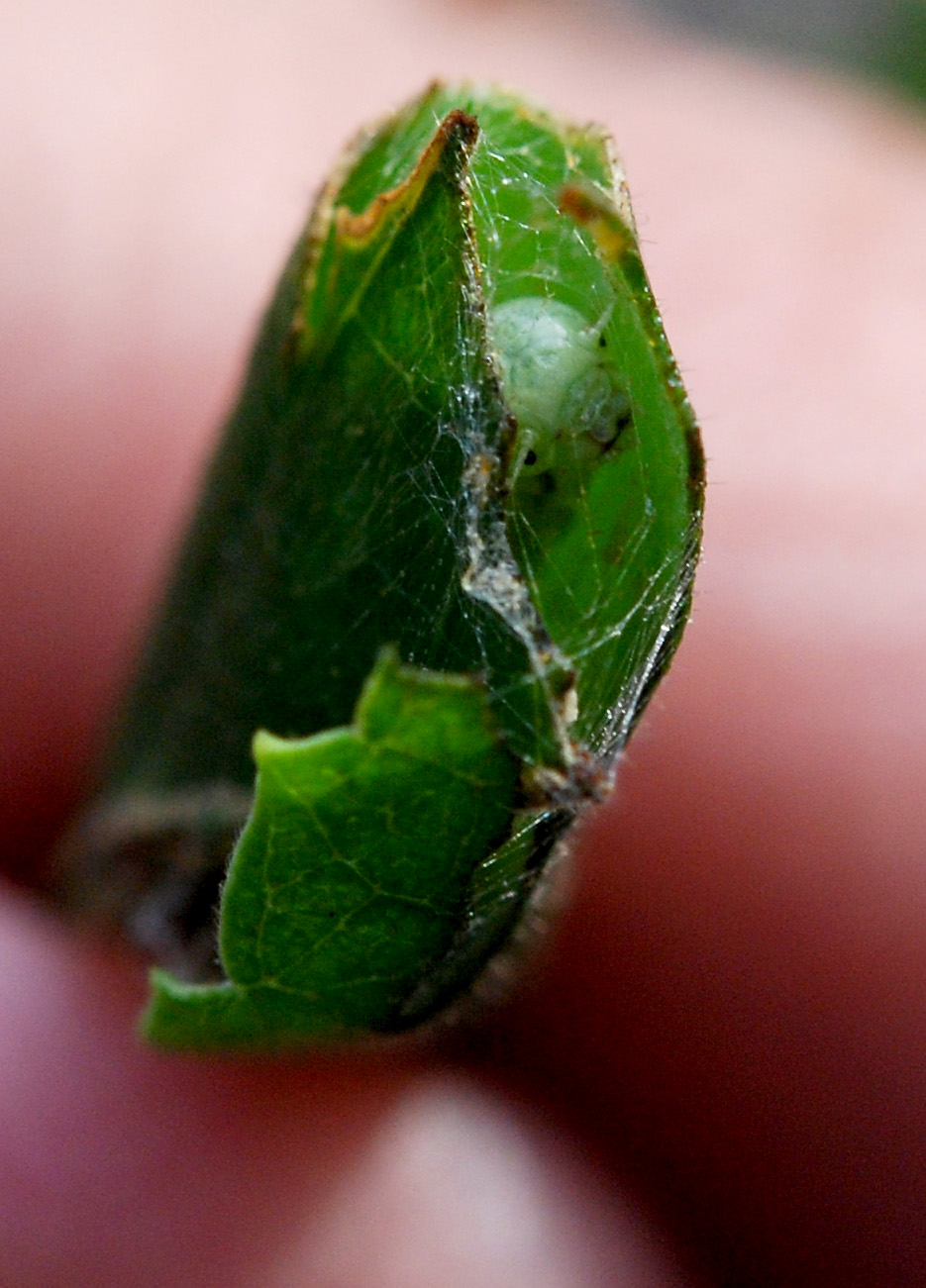 |
|
|
Later-stage Pamphilius sp. roll on a leaf of Betula pubescens. The roll is less obvious because the leaf is almost totally consumed, but a lot of silk is still present. |
Pamphilius sp. larva inside roll on a leaf of Betula pubescens. Note the long antennae of the larva. |
|
|
Moth larvae (Lepidoptera: several families) Moth larvae in many different families make leaf rolls on birch leaves. Like rolls constructed by pamphiliid sawflies, moth shelters always contain a lot of silk webbing which holds the roll in shape. Moth larvae look more flat-headed than pamphiliid larvae and they have shorter antennae. Moth larvae also have abdominal prolegs. |
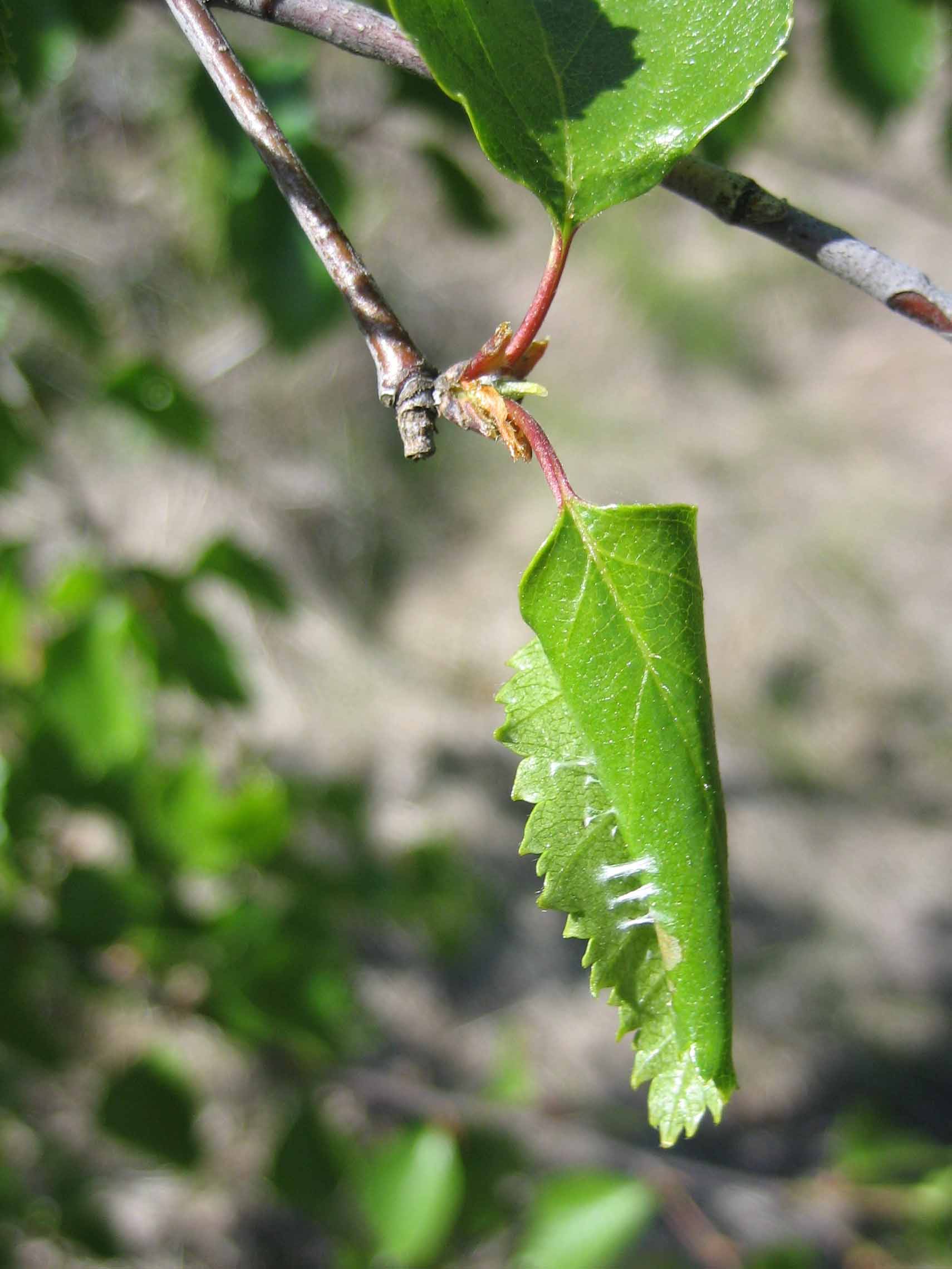 |
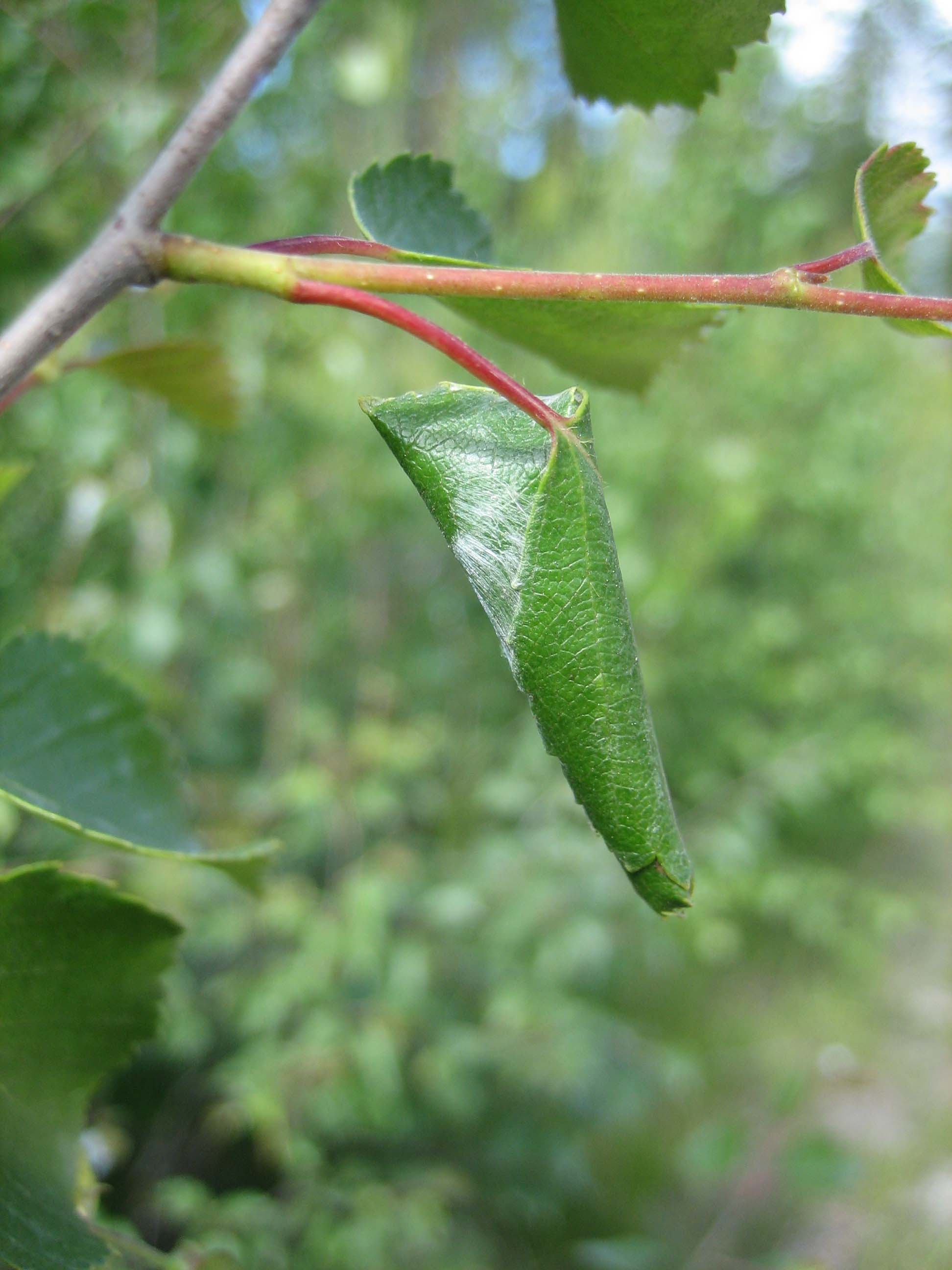 |
|
Leaf roll made by an unidentified moth larva on Betula pubescens. Note the white silk strings that the larvae use to tie the leaf. Silk is also present inside the roll. |
Leaf roll made by an unidentified moth larva on Betula pubescens. The moth species is probably different from the one to the left, because the silk strands used to tie the leaf are thinner and denser. |
|
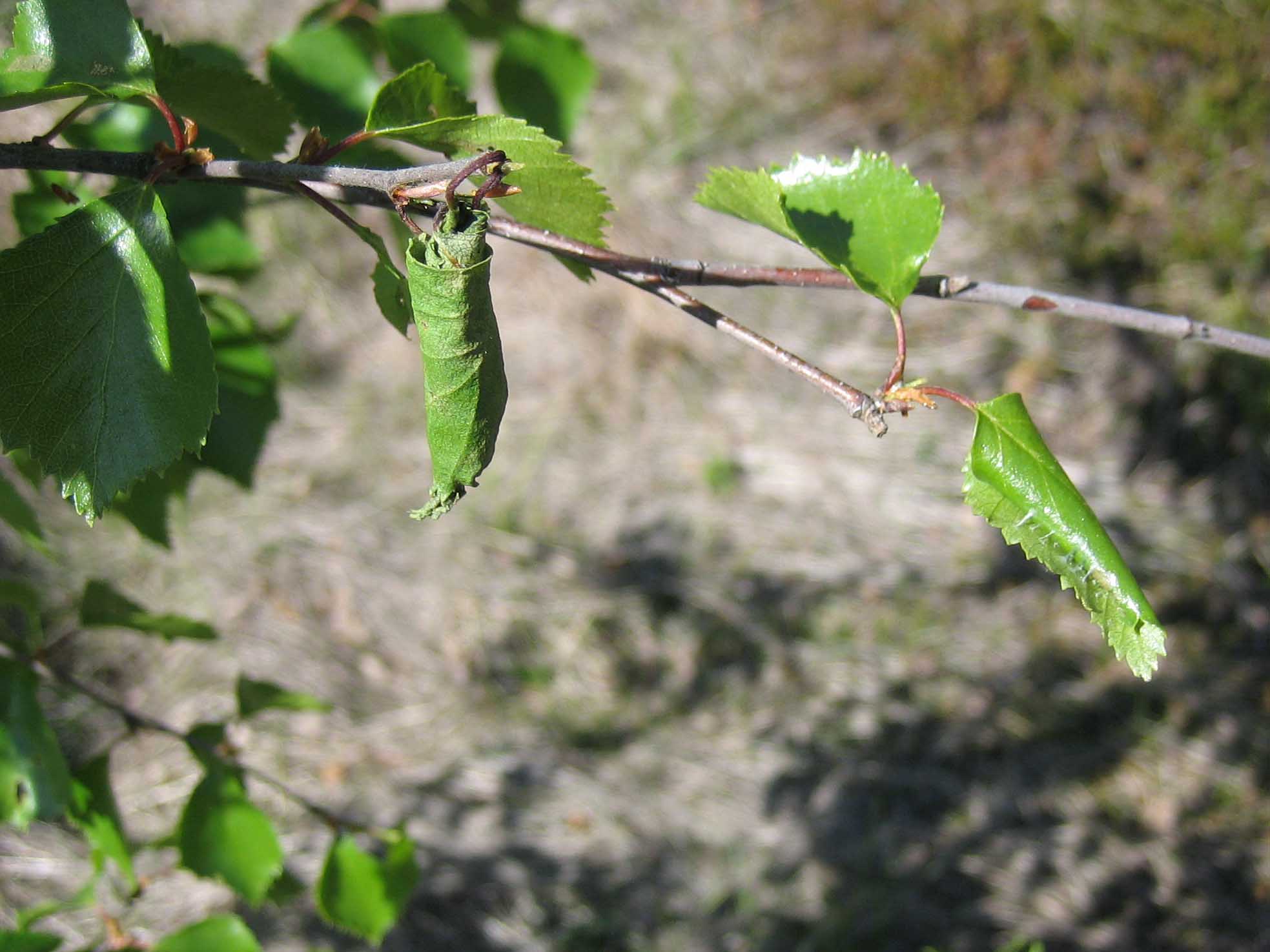 |
||
|
Leaf bundle constructed by the attelabid beetle Byctiscus betulae (left) and leaf roll made by a moth larva (right) on the same Betula pubescens branch.
|
||